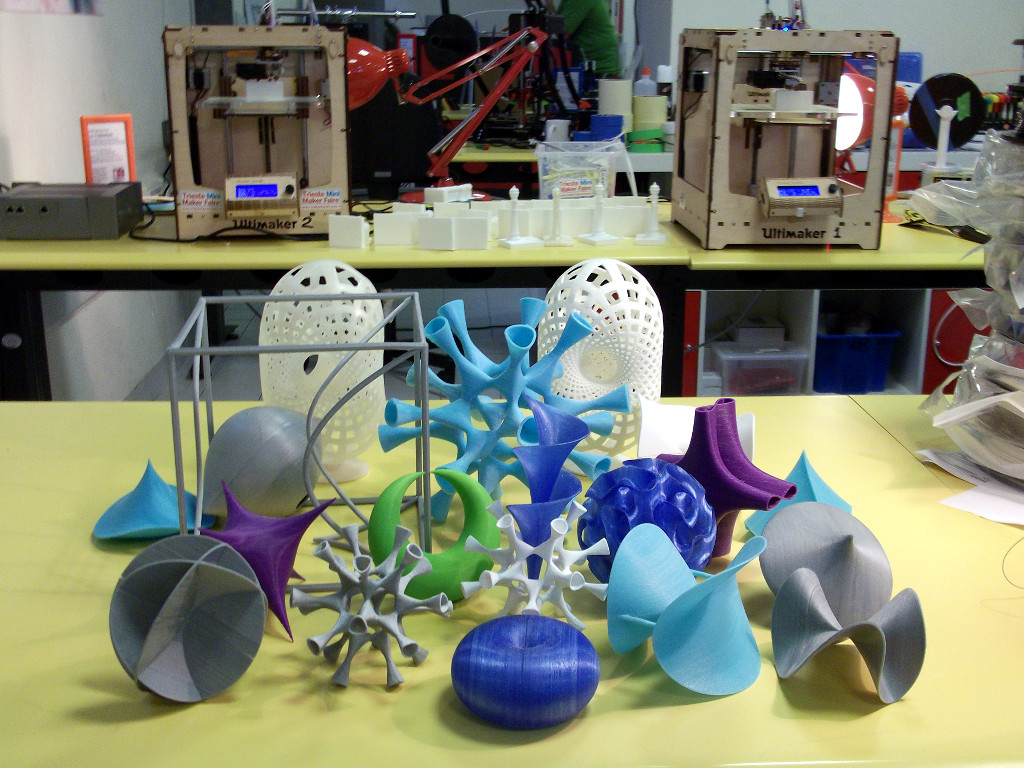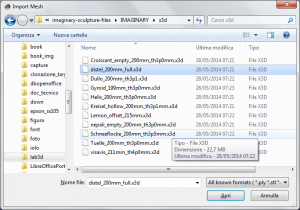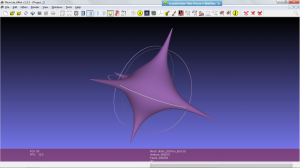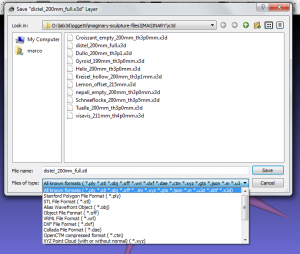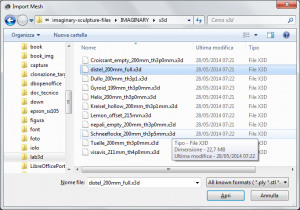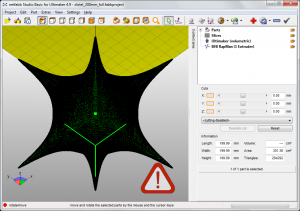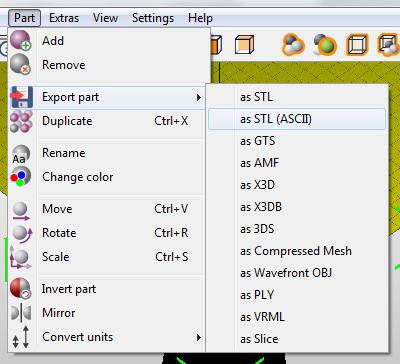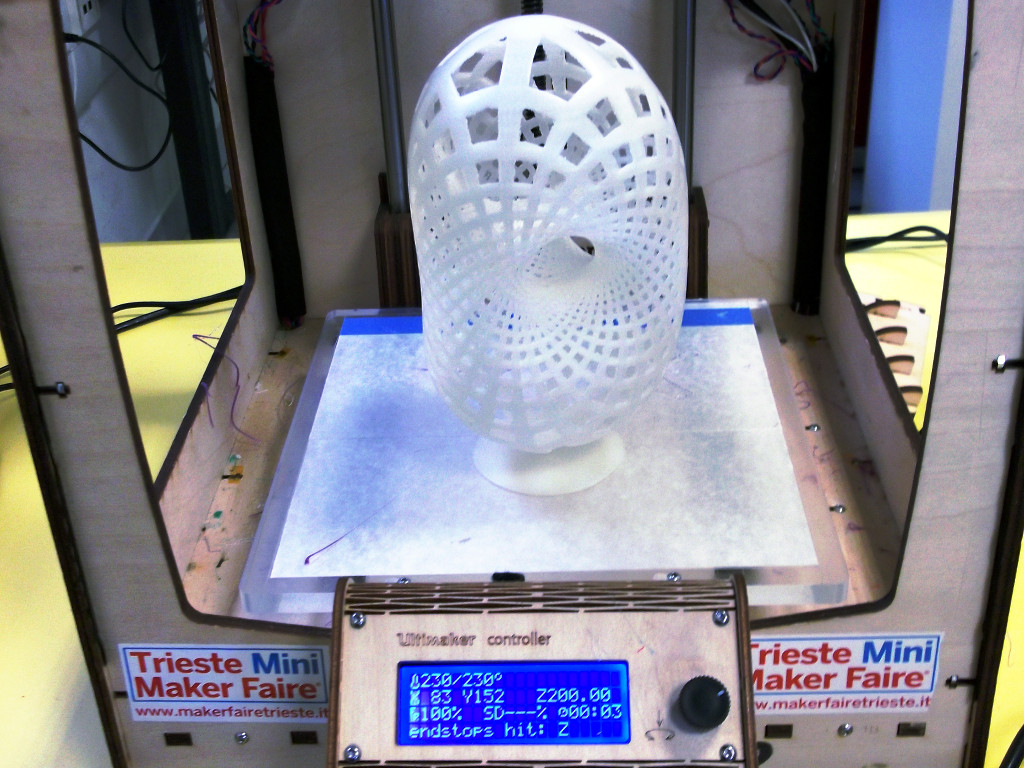The ICTP SciFabLab has hosted recently a project related to the challenge of making low-cost replicas of some mathematical surfaces that are part of the educational effort of IMAGINARY.ORG. Now the results are presented at a conference in Cape Town (South Africa), here you can find the presentations:
“Low-cost 3D Printing: Maths you can touch”
(duration: 60 min, 68 slides)
IMAGINARY_1 (PDF, 26 MB)
IMAGINARY_1 (PPTX, 345 MB – WARNING: big file size!)
“Replicating the IMAGINARY collection of math objects using low-cost 3D printers”
(duration: 15 min, 18 slides)
IMAGINARY_2 (PDF, 5 MB)
IMAGINARY_2 (PPTX, 20 MB)
“Software tools and web resources to generate math objects for 3D-printing”
(duration: 30 min, 19 slides)
IMAGINARY_3 (PDF, 10 MB)
IMAGINARY_3 (PPTX, 25 MB)
Three related articles
extracted from the free open book on “Low-cost 3D Printing for Science, Education and Sustainable Development”, about OpenSCAD and K3DSurf (software tools to generate printable math objects)
- 3D Modeling with OpenSCAD – Part 1
by Sebastian Büttrich - 3D Modeling with OpenSCAD – Part 2
by Marius Kintel - From Math to Jewel: an Example
by Gaya Fior
excerpt_3DPrinting_Book (PDF, 11 MB)

